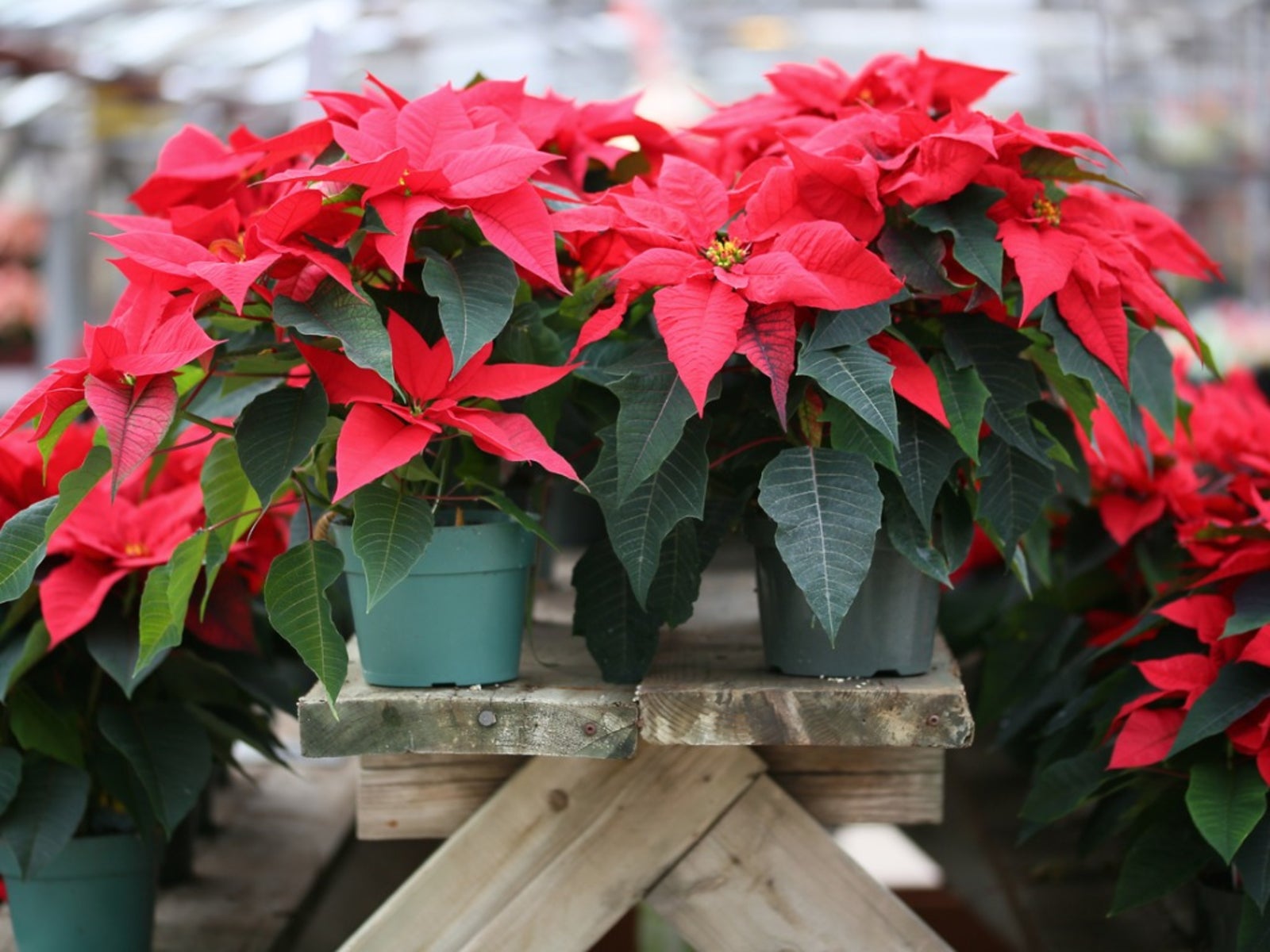
The life cycle of the poinsettia may seem a bit complicated, but this short day plant must satisfy certain growing requirements in order to bloom.
Where Did the Poinsettia Come From?
In order to fully understand or appreciate this plant, it is helpful to take a look at where the poinsettia comes from. The poinsettia is native to Central America, near southern Mexico. It was introduced to the United States in 1828 and got its name from Joel Roberts Poinsett. Poinsett was the first U.S. Ambassador to Mexico with a passion for botany. Upon discovering this shrub, he became so enchanted with its bright red blooms that he sent some to his South Carolina home to be propagated.
What Makes Poinsettias Turn Red?
Many people wonder what makes poinsettias turn red. It is actually the plant’s leaves that provide its color through a process called photoperiodism. This process, in response to certain amounts of light or lack thereof, turns the leaves from green to red (or pink, white, and other shade variations).
What most people mistake as flowers are in fact specialized leaves, or bracts. The small yellow flowers are found in the center of the leaf branches.
How to Make Poinsettia Turn Red
In order to get a poinsettia plant to turn red, you need to eliminate its light. Flower formation is actually triggered by periods of darkness. During the day, poinsettia plants require as much bright light as possible in order to absorb enough energy for color production.
At night, however, poinsettia plants must not receive any light for at least 12 hours. Therefore, it may be necessary to place plants in a dark closet or cover them with cardboard boxes.
Make a Poinsettia Rebloom
To coax a poinsettia plant to bloom again, it’s necessary to repeat the poinsettia life cycle. After the holidays and once blooming has ceased, limit the amount of watering so the plant can go dormant until spring.
Then, usually around March or April, regular watering can be resumed and fertilizing can begin. Prune back the plant to about 6 inches (15 cm.) from the top of the container and repot.
Poinsettia plants can be kept outdoors in a protected sunny area during summer, if desired. Pinch out the tips to promote branching of new growth until about the middle of August.
Once fall returns (and shorter days), reduce the amount of fertilizer and bring outdoor plants inside. Once again, limit watering in September/October and give the poinsettia bright daylight temperatures between 65 and 70 degrees F. (16-21 C.) with total darkness at night with cooler temperatures of around 60 degrees F. (15 C.). Once flower bracts have developed definite color, you can reduce the amount of darkness and increase its water.
The life cycle of the poinsettia may seem a bit complicated, but this short day plant must satisfy certain growing requirements in order to bloom.
Where Did the Poinsettia Come From?
In order to fully understand or appreciate this plant, it is helpful to take a look at where the poinsettia comes from. The poinsettia is native to Central America, near southern Mexico. It was introduced to the United States in 1828 and got its name from Joel Roberts Poinsett. Poinsett was the first U.S. Ambassador to Mexico with a passion for botany. Upon discovering this shrub, he became so enchanted with its bright red blooms that he sent some to his South Carolina home to be propagated.
What Makes Poinsettias Turn Red?
Many people wonder what makes poinsettias turn red. It is actually the plant’s leaves that provide its color through a process called photoperiodism. This process, in response to certain amounts of light or lack thereof, turns the leaves from green to red (or pink, white, and other shade variations).
What most people mistake as flowers are in fact specialized leaves, or bracts. The small yellow flowers are found in the center of the leaf branches.
How to Make Poinsettia Turn Red
In order to get a poinsettia plant to turn red, you need to eliminate its light. Flower formation is actually triggered by periods of darkness. During the day, poinsettia plants require as much bright light as possible in order to absorb enough energy for color production.
At night, however, poinsettia plants must not receive any light for at least 12 hours. Therefore, it may be necessary to place plants in a dark closet or cover them with cardboard boxes.
Make a Poinsettia Rebloom
To coax a poinsettia plant to bloom again, it’s necessary to repeat the poinsettia life cycle. After the holidays and once blooming has ceased, limit the amount of watering so the plant can go dormant until spring.
Then, usually around March or April, regular watering can be resumed and fertilizing can begin. Prune back the plant to about 6 inches (15 cm.) from the top of the container and repot.
Poinsettia plants can be kept outdoors in a protected sunny area during summer, if desired. Pinch out the tips to promote branching of new growth until about the middle of August.
Once fall returns (and shorter days), reduce the amount of fertilizer and bring outdoor plants inside. Once again, limit watering in September/October and give the poinsettia bright daylight temperatures between 65 and 70 degrees F. (16-21 C.) with total darkness at night with cooler temperatures of around 60 degrees F. (15 C.). Once flower bracts have developed definite color, you can reduce the amount of darkness and increase its water.
